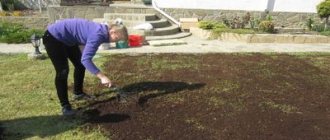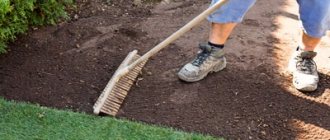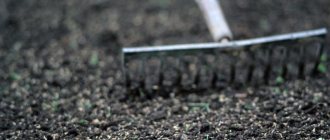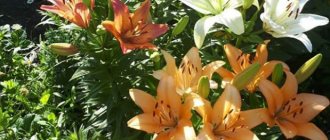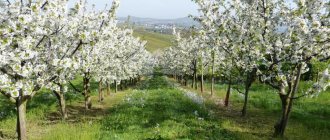Moss is an inhabitant of damp and shaded forests, so we rarely encounter it in life and know little about this amazing plant. In fact, once upon a time he could replace a medical bandage and show the way to lost mushroom pickers. Green home enthusiasts still use dried plants to insulate their homes. But we are more interested in the decorative side of moss: whether it can be used in landscape design and grown independently in the country.
If you have ever walked barefoot through the forest, you may have noticed how pleasantly the soft moss springs under your feet. Moss is ideal for the garden or yard as it helps retain moisture and, unlike grass, does not need to be mowed. You can also grow moss on a fence, foundation or stones to create the atmosphere of a magical forest in your area. Growing moss requires only a little prep work, and then it will grow beautifully on its own for years.
Types of moss for a summer cottage
Each type of moss has its own “preferences” in terms of favorite habitats, which should be taken into account when planting them on the site. In addition, the external diversity of mosses is amazing and by arranging different varieties you can create a rich and varied landscape.
The most common type of moss is tortulla wall , which is more often called household moss. You can meet it literally everywhere, in a forest, a park, on a wall in a dark damp alley, etc.
The best place for tortulla is on limestone rocks and walls made of limestone rocks.
Kukushkin flax is an amazingly beautiful variety of moss that looks like miniature branches of pine needles. But finding it is much more difficult; to do this you will have to either spend money at a flower shop or go searching in the forest.
Looking carefully at your feet in the forest, you will probably come across an emerald blanket made of cuckoo flax. This variety of moss is incredibly beautiful and can easily compete with other ground cover plants, growing up to 15 cm in length. Cuckoo flax should be planted in the soil; it may not take root on a stone or tree.
Hypnum cypress is the second most common type of moss; in the forest it grows to form huge islands of emerald color. But even in an urban environment, it finds a place for itself on the walls and roofs of houses.
“Velvet carpet” as a decorative decoration
Mosses are unusual both in their structure and in their way of life. Unlike other dacha flora representatives - trees, grass, flowering plants - they do not have roots or flowers, but outgrowths that replace leaves have a unique decorative effect.
A variety of colors, from bright green to red-brown, allows you to create unusual velvety lawns, decorate alpine hills and rockeries, “aging” brick fences, tree stumps and stone framing of ponds
The Japanese, who were attentive to detail, were the first to use moss in landscape design. They noticed that miniature thickets in a certain, comfortable environment for them live and develop no worse than garden plants, and in some cases, their appearance outshines them.
Back in the 14th century, Japanese monks created the Saihoji moss garden, which, slightly modified, still exists.
Various types of mosses and lichens cover small islands, stones, tree trunks, and soil with a thick multi-colored lawn, creating an atmosphere of peace and quiet.
The tradition of using moss in landscape design spread to Europe, and then to other continents, to all regions where the climate is conducive to the growth of these special plants.
The most popular decoration technique suitable for a summer cottage is the creation of mossy stone, which is part of a stone garden or rock garden. Half covered with green velvet, the stone takes on a completely different look - more ancient, mysterious, fabulous.
Mosses and lichens fit organically into the composition of coniferous forest trees: covering the lower parts of the trunks, they simultaneously protect them from drought and overheating
From the point of view of the possibility of decorating large and small forms, moss is universal. It perfectly “ages” statues, vases, fountains and garden sculptures located in the shade, but also serves as excellent additional protection for roofs and gazebos. And of course, as a cover plant it frames garden paths, small flower beds, ponds and stream banks.
Where can I get moss?
Thanks to the Internet, today you can buy anything; in addition, a considerable assortment of different varieties of moss can be found in flower shops in your city. But it’s much more interesting and reliable, from the point of view of the final result, to assemble it yourself.
The easiest way to find moss is in its natural environment, namely in shady areas of a forest or park. But if you take a closer look at your own area, it is likely to find that moss is already growing in your yard.
The most common type of moss, which is called household moss, can be found even in the city, in dark damp corners right on the asphalt.
Moss does not have a root system and reproduces exclusively by spores. At the same time, moss is perfect for replanting and grows quickly in a new place.
In order to collect moss you will need a knife or spatula.
You need to carefully pry it off with a spatula or other sharp object and place it in the box.
Having collected the “seedlings”, cut pieces of moss should be kept for some time in a container of water so that they are nourished with moisture and become stronger.
If there are already places where moss grows on the site, then simply helping it expand its habitat is enough. To do this, you need to remove higher plants around it, clean the soil and walk through it with a rake; it is advisable to treat this area with herbicides and acidify the soil with peat or citric acid to pH 5.5.
When collecting moss, remember that moss taken from tree bark should only be planted on trees, and moss cut from the surface of the soil should be grown on the ground.
How to care for mossy lawns?
Like any lawn, flower bed or rock garden, moss requires regular care, which includes moistening, thinning, updating and basic cleaning. Moss grows quite slowly: the first young pads will appear no earlier than 4-5 weeks after planting. They will appear near the “parental” nests on all sides or in one direction, the most favorable for growth.
At this stage, you should adjust the size of the “mat” if you need it to be within strictly limited limits. Until the young shoots have grown, the plantings should be kept moist.
It happens that plants do not take root and die. No problem: pick a different species and plant it in the same place. Sometimes moss dries out due to lack of moisture or strong exposure to sunlight. Perhaps abundant watering will revive dried plants
Unlike a traditional lawn, moss grass does not require regular mowing. However, it is necessary to ensure its cleanliness. Forest debris will not only spoil the aesthetics of the decorative covering, but will also cause the death of moss or the appearance of unsightly “bald patches.”
It is very simple to protect a velvet rug from autumn leaves: spread a fine mesh over the entire lawn, and then simply roll it up along with the leaves.
How to grow moss on the ground?
The easiest way to grow moss in soil is to take a small piece of moss somewhere and place it on the soil in the desired location. Thoroughly loosen the surface of the soil in the place where you are going to plant it, so that its threads get good contact with the ground. Moisten the area and place moss on it. It is necessary to press it well into the ground. You can even put a few light stones on top - this will help it stick better. Newly transplanted moss should be kept well hydrated for the first few weeks. Moss is not divided into varieties, but there is an opinion among practitioners that some types of moss grow better in the ground, while others grow better on hard rock. So it is wise to take your planting specimen from the same surface where you are going to plant it to minimize propagation problems (eg if you want to grow it on rocks, then the seedling should be taken from a rock, etc.) .
We recommend reading these articles:
Planting verbena seeds for seedlings in 2022
Favorable days for planting eustoma in April 2022
Pruning hydrangea in autumn for beginners in pictures step by step
What are the benefits of moss?
Bryophytes were among the first to appear on Earth. The age of these plants is about 300 million years. There are many types of mosses, and in botany an entire section called bryology is devoted to their study.
The plants in question are not only natural bioindicators that respond to humidity and air pollution, but also excellent environmental cleaners. Mosses absorb radioactive particles and various contaminants, acting as a kind of filter.
The benefit of this plant also lies in protecting trees from sunburn and frost. A thick layer of mosses or lichens protects the trees. Moreover, such vegetation is not parasitic; it does not penetrate deep into the bark and does not destroy the surface.
The importance of mosses in nature and human life
How to grow moss on stones, bricks and garden figures?
Starting to grow moss on a rock is a little more difficult than simply moving a piece of it there. To grow moss on rocks, bricks, or garden pieces, many people have had success using buttermilk. It is mixed with moss and applied to a new surface.
The recipe is:
2 cups buttermilk or yogurt
1-1/2 moss tops, chopped (fresh or dried)
Mix until the consistency of medium-fat sour cream. If the mixture is too thick, add a little water. If it is too runny, add more moss.
Spread the mixture onto the desired surface and leave it there for a day or two to begin the process. After about 6 weeks you will see moss sprouting.
Determining cardinal directions by moss
The easiest way to determine the cardinal directions is with a compass. But if it is not possible to use the device, just look at which side the moss is growing on. Knowing this, you can figure out where the north direction is. It should also be taken into account that the accuracy of the determination may be affected by a neighboring tree. If it blocks out the sunlight, moss will grow just as well in the south as in the north.
To reliably determine the cardinal direction, you should pay attention to other natural landmarks.
To understand on which side the moss growth is most abundant, you should examine a large number of trees
How to make living graffiti from moss in the garden
Using bryophytes in ornamental gardening, you can create real works of art. To bring your ideas to life, use a simple recipe.
Place a couple of moss pads in a regular blender, add ½ cup of kefir, a glass of water and 1 tbsp. l. special hydrogel for plants to thicken the mixture (you can try to do without it). Prepare a thick mixture by mixing the ingredients for 2 minutes. Place a stencil on the selected surface (stone wall, brickwork, path, large stones) and fill the empty spaces with a thick layer of the mixture using a sponge or brush.
Spray well with water 2 times a week so that spores begin to develop. The result will be visible within a month.
Secrets and rules of growing moss
If you are an experienced florist and have already learned how to grow flowers, care for lawns and harvest a rich fruit harvest in the fall, you can safely start growing moss and decorate your garden decor or fence with it.
Beginning designers can also grow mosses or lichens on their own, having learned the basics of caring for unusual representatives of the flora.
Where is the best place to place a moss garden?
As you know, moss loves partial shade and a large amount of moisture, so before purchasing decorative species in a store or collecting them yourself in the forest, make sure that your country estate has an area that meets these requirements.
Takakiidae and Anthocerotidae
The distribution range of takakiid mosses covers Japan, the Himalayas and the Pacific coast of North America. This genus consists of two species:
Takakia cornifolia lives in China, the Himalayas, Nepal and Alaska.- Takakia lepidosiiformes is common in Taiwan, the Aleutian Islands and British Columbia.
Anthocerotic mosses differ from other members of this family in that they have lamellar thalli (a term used to designate the body of algae, fungi, and lichens) in the form of rosettes. For the most part, this type of bryophyte plant is distributed in the tropics, but is also found in temperate latitudes. There are five families of this class, fourteen genera, and, according to various sources, about three hundred species.
Oak and key
Another name for oak moss is Evernia plum. This species of lichen is found in temperate climates throughout the Northern Hemisphere. It is actively grown in France, Portugal, Spain and the countries of Central Europe and North America. Although most often the type of moss grows on the trunks of oak trees, as the name implies, it can also be found on the trunks of other trees - both deciduous and coniferous.
This moss has a complex and rich aroma that is widely used in perfumery not only for its aroma, but also for its longevity. Since Evernia plum is a strong allergen, it is used only in very small quantities.
In folk medicine, oak moss tincture is used as a strong antibiotic. It can also be used to repel wolves and foxes, since animals do not like this smell.
The second name of this species is Fontinalis. It grows almost all over the globe. The exception is Australia. Although key moss is not an aquatic plant, it is usually found in bodies of water with slow-moving or standing, but clean water.
Fontinalis grows in large groups in the form of lacy thickets of emerald color, pleasing to the eye. Because of the pleasant appearance of this moss, people often try to breed it in aquariums, which is not at all as easy as it seems at first glance. In summer, during the growth period, the plant should be kept in warm water (up to 28 degrees Celsius), and in winter, during the dormant period, in water with a temperature of about ten degrees. It is best to keep spring moss in soft water.
Points to consider
As noted earlier, moss is a fairly moisture-loving plant, and its use in areas where sunlight predominates throughout the day is not rational. The fact is that using it in the form of mulching garden crops planted in open areas will require additional watering. Because moss not only absorbs water well, but can also quickly evaporate it. Besides:
- Promotes soil oxidation, as it contains organic acids, and some plants simply cannot grow in it.
- If you use moss as mulching, but for it to have a long period of action, you must at least use a layer of at least 10-15 centimeters. This mainly applies to lining around fruit trees.
- For mulching, you need to take dry moss, which is pre-dried. When dry, it can be stored in ordinary linen or paper bags.
To summarize, we can say that using moss in your garden can bring many benefits to plants, and if you use it as landscaping for your summer cottage, moss will become an effective decorative element that will bring joy with its beauty for many years.
Leptodiccium coastal and Lomariopsis lineatu
The first type of moss has a very original appearance. This is an airy bunch of long thin green stems located at a certain distance from each other. Leptodictium lives in both flowing and standing water. Attaches to both wood and stones. It can also live in soil with high humidity.
This species does not require special conditions at home - it is very unpretentious and grows quickly. It looks aesthetically pleasing and can decorate any home aquarium.
The usual habitat is China, Malaysia, Australia, America, Africa. Typically grows in bodies of water with clean, slow-flowing water.
Due to its unusual appearance, Lomariopsis lineatu is very popular in aquarium design. This moss looks like a round, bright green mound with dense oval leaves. This plant is very unpretentious in maintenance, which is why it is so widespread.
How to decorate a garden plot with moss
When choosing a place to plant a plant, you need to remember that garden moss prefers shaded, semi-shaded space, abundantly moist soil. In the absence of these components, it develops poorly and dies. The ideal location for the plant would be an area located under deciduous and coniferous trees.
The moss on the lawn looks amazingly beautiful, placed in shaped inserts along the sidewalk paths. It is better to place such evergreen bushes in the northern part of the site, hidden from direct sunlight. Mosses also look harmonious on various types of stones. A moss lawn will wonderfully highlight the beauty of nearby growing shrubs and large, mighty trees.
It must be taken into account that the culture grows slowly and requires care. In addition to abundant moisture, suitable soil acidity is necessary. Optimal acidity – 5-6 Ph. If for some reason you need to remove moss from your lawn, doing so is quite simple. The layer of planting is removed, the place where it grows is sprinkled with sand. Humidity should be limited and the soil should be allowed to dry thoroughly. By creating an environment unfavorable for reproduction, the fight against moss on the lawn will quickly end in victory.
a brief description of
The upper part of the plant is a rich green color, while the lower part is dry and yellowish in color. The fact is that the plant cap does not allow oxygen to pass through well, so when they form new balls, they block the air from the lower ball. Thus, its slow death occurs, and the dead particles of the plant form peat bogs. Peat is an excellent fertilizer for mosses. Often the designated vegetation grows in swampy areas, but is also found in forests or forested areas where moisture and shade prevail. In addition to the formation of peat, there are other useful properties, for example:
- The plant is considered an excellent antiseptic due to its sphagnol content, which can suppress bacterial microflora.
- It does not allow moisture to evaporate from the soil and can accumulate quite a lot of it, thereby providing itself with the necessary level of humidity.
- It also helps replenish the soil with useful substances that are formed during the death of the lower particles of the plant.
- Maintains a stable soil temperature, as it retains heat in winter and coolness in summer.
- The presence of phytoncidal properties makes it possible to eliminate the process of mold formation, so it is recommended to place cuttings and seedlings in moss balls. This way you can ensure their safety for a long time.
We grow a “forest for pandas” - bamboo thickets will decorate any area
In addition, weeds almost completely do not grow on moss-covered soil, so there will be no need for additional weeding of the area.

